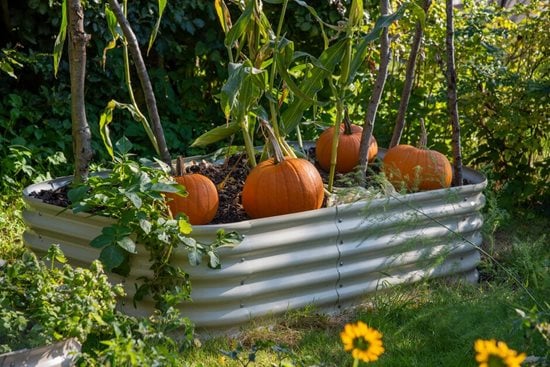
Pumpkins, with their vibrant colors and versatility in the kitchen, are a favorite among gardeners looking to cultivate their own produce. While traditionally grown in sprawling garden plots, the concept of container gardening has sparked interest in growing pumpkins in pots. In this article, we explore the feasibility of planting pumpkins in containers, providing insights into container selection, soil preparation, planting techniques, and care tips for a successful harvest.
I. Introduction
A. The Appeal of Growing Pumpkins Pumpkins are not only prized for their decorative appeal during the fall season but also valued for their culinary versatility and nutritional benefits. The prospect of growing pumpkins at home appeals to gardeners seeking to cultivate their own fresh produce.
B. Considerations for Container Gardening Container gardening offers flexibility and convenience, particularly for individuals with limited outdoor space or challenging soil conditions. It allows gardeners to grow a variety of plants, including vegetables and fruits, in pots or containers.
C. Exploring the Feasibility of Growing Pumpkins in Pots While pumpkins are traditionally grown in large garden plots, the possibility of growing them in containers raises questions about feasibility and practicality. We delve into the factors influencing successful pumpkin cultivation in pots.
II. Selecting the Right Container
A. Size and Depth Requirements Pumpkins have extensive root systems and require ample space for growth and development. When selecting a container, opt for a large pot with a depth of at least 18 inches to accommodate the roots and support vine growth.
B. Material Choices and Drainage Needs Containers made of durable materials such as plastic, ceramic, or fabric are suitable for growing pumpkins. Ensure that the container has adequate drainage holes to prevent waterlogging, which can lead to root rot and other moisture-related issues.
C. Accessibility for Root Growth and Support Pumpkins thrive in well-aerated soil with good drainage, so choose a container with sufficient room for root expansion. Additionally, consider providing support structures such as trellises or stakes to support the vines as they grow and bear fruit.
III. Preparing the Potting Mix
A. Ideal Soil Composition for Pumpkins Pumpkins prefer loamy, well-draining soil with a slightly acidic to neutral pH level. Prepare a potting mix using a combination of garden soil, compost, and perlite or vermiculite to improve drainage and aeration.
B. Incorporating Organic Matter and Nutrients Amend the potting mix with organic matter such as compost or aged manure to enrich the soil with essential nutrients. This promotes healthy root growth and provides a steady supply of nutrients throughout the growing season.
C. Ensuring Proper Drainage and Moisture Retention Proper drainage is crucial for preventing waterlogged soil, which can suffocate the roots and stunt plant growth. Mix in perlite, sand, or gravel to improve drainage, while adding organic matter helps retain moisture and promote soil structure.
IV. Planting and Care Tips
A. Sowing Pumpkin Seeds or Transplants Depending on your preference and local growing conditions, you can start pumpkins from seeds or purchase transplants from a nursery or garden center. Sow seeds directly into the potting mix or transplant seedlings after the last frost date.
B. Providing Adequate Sunlight and Watering Place the container in a sunny location where the pumpkin plants receive at least six to eight hours of sunlight per day. Water the plants regularly, keeping the soil evenly moist but not waterlogged, especially during hot, dry weather.
C. Supporting Vine Growth and Managing Pests As the pumpkin vines grow, provide support structures such as trellises or cages to prevent them from sprawling and to support the weight of the developing fruit. Monitor the plants for signs of pests and diseases, and take appropriate measures to manage infestations.
V. Harvesting and Final Considerations
A. Monitoring Pumpkin Growth and Development Keep an eye on your container-grown pumpkins as they mature, monitoring their growth and development. Harvest pumpkins when they reach full size and develop a deep, uniform coloration, typically in late summer to early fall.
B. Harvesting Ripe Pumpkins and Storing Harvested Fruit Use a sharp knife or pruning shears to harvest ripe pumpkins, leaving a few inches of stem attached to the fruit. Store harvested pumpkins in a cool, dry place with good air circulation, where they can be enjoyed fresh or used for cooking and carving.
C. Reflecting on the Success of Container Pumpkin Gardening Container pumpkin gardening offers a rewarding experience for gardeners of all skill levels, providing an opportunity to grow fresh, nutritious produce in limited space. Reflect on your gardening journey and celebrate the success of your container-grown pumpkins.



